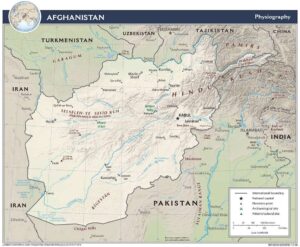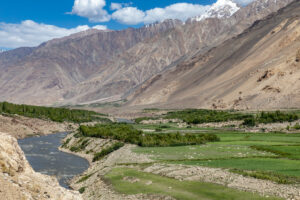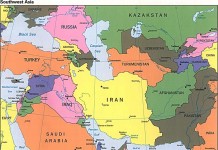
By Naade Ali
South Asia and Middle East Analyst
Context
Since the withdrawal of US and NATO troops from Afghanistan in the aftermath of 2020 Doha Agreement, tensions between Afghanistan and Pakistan have frequently escalated. The differences reached their peak last year when the Pakistani military conducted targeted airstrikes in Afghanistan’s Barmal district, located in eastern Paktika province. The aim of the strike was to neutralize key Tehreek-e-Taliban Pakistan (TTP) commanders and dismantle a media facility. In retaliation, the Afghan Taliban launched attacks on multiple targets, including military posts, beyond the Durand Line. In its messaging, the Afghan Defense Ministry further dismissed Pakistan’s claim over the Federally Administered Tribal Areas (FATA), now integrated into Khyber Pakhtunkhwa (KP).
Adding to the strain, the Afghan Taliban collaborated with TTP forces in joint border offensives, resulting in prolonged skirmishes that significantly deteriorated bilateral relations. This year, clashes between the two militaries resumed in Khost province. On January 11, Taliban spokesperson Zabiullah Mujahid accused Pakistani forces of targeting civilian infrastructure in eastern Kunar province which resulted in casualties, and urged them to cease such actions. While border clashes became the new normal, Pakistan maintains that despite the tensions, it seeks friendly relations with Afghanistan.
What is clear is that the security situation in Pakistan has worsened by an acute increase in terrorist violence, with an estimated 4,000 TTP militants reportedly taking refuge in KP. These militants operate secretly, launching attacks on security forces at night and blending into civilian areas during the day. Recent reports from the KP police indicate that these militants often use civilians as shields, making counter terror operations particularly complex.
The opposition from certain local groups to military operations has further exacerbated these challenges. Political groups like the Pashtun Tahafuz Movement (PTM) and the Pakistan Tehreek-e-Insaaf (PTI)-led government in KP have publicly criticized the military’s actions, even demanding its withdrawal from the region.
Pakistan’s policy on how to deal with TTP has swung between achieving a political solution to using force. The core of the issue is how to engage with the Afghan Taliban who have provided refuge to TTP, reciprocating the support TTP previously provided to Afghan Taliban that resulted in US and NATO withdrawal.
Political versus Military Solution
Recent reports indicate that Afghan Taliban government privately acknowledged the TTP as a problem but objected to Pakistan’s hardline approach in addressing the threat. Instead, the Afghan Taliban proposed dialogue as a solution, but Pakistan dismissed the TTP’s demands as unacceptable, ruling out negotiations. This development starkly contrasts with the Afghan Taliban’s official stance, which denies the presence of the TTP in Afghanistan and frames the issue as an internal matter for Pakistan. Taliban spokesperson Zabiullah Mujahid was observed saying, “The issue of the TTP or the war within Pakistan is a matter that pertains to that country. We are working to find a solution to this issue; however, it is not our matter. We will not allow Afghanistan’s soil to be used against any country, including Pakistan.”
The Afghan Taliban have consistently portrayed terrorism in Pakistan as an internal matter, and continued refusal to recognize the Durand Line as an international border. By fostering Pashtun nationalist sentiments in KP, the Taliban have undermined Pakistan’s territorial integrity and bolstered support for the TTP’s broader agenda.
The TTP’s ultimate aim of transforming KP into a province of the Islamic Emirate of Afghanistan aligns with the Taliban’s ideological goals, posing a long-term threat to Pakistan’s sovereignty. In response, Pakistan’s military leadership has labelled the TTP as Fitna Al Khawarij (anarchist infidels), using religious nationalism to delegitimize the group. However, this narrative has struggled to gain widespread public support and political ownership.
Adding to the diplomatic rhetoric, Sher Mohammad Abbas Stanikzai, the deputy political minister of foreign affairs, stated that the Islamic Emirate would not permit external interference in Afghanistan’s internal affairs. He also urged neighboring countries, especially Pakistan, to reciprocate by avoiding interference in Afghanistan’s internal matters. His remarks highlighted Afghan Taliban’s resistance to Pakistan’s pressure for dismantling the TTP and relocating fighters from border regions. Despite terse diplomatic exchanges and rising hostilities, Pakistan acknowledged its “multilayered engagement” with the Afghan Taliban reflects the involvement of multiple actors working to de-escalate tensions.
Pakistan’s Shifting Afghan Policy
For Pakistan’s military, however, ceasing counter-terrorism operations would effectively allow the TTP to regroup and further destabilize the region. This sentiment was reiterated by the army chief during meetings with political factions in KP, where he urged unity against terrorism, stating, “The existence of the state ensures the existence of politics; God forbid, if there is no state, there is nothing. We must all stand united against terrorism, without any discrimination or prejudice.” He further emphasized, “Creating disorder is a grave sin, and without the state, nothing else matters.”
During a recent provincial-level security meeting in Peshawar, Pakistan’s army chief, General Asim Munir, described Afghanistan as a “brotherly neighbor” and an “Islamic country” with which Pakistan has always sought better relations. However, he emphasized, “The only difference with Afghanistan is the presence of Fitna al-Khawarij in Afghanistan and the spread of terrorism in Pakistan from across the border.”
General Munir expressed regret over the Afghan Taliban’s refusal to dismantle the TTP, stating that Pakistan had “exhausted all options” to persuade Afghanistan to curb cross-border militant attacks. He further remarked, “Our only policy is Pakistan,” signaling that national security remains paramount and that military operations against TTP-led terrorism would continue, even at the expense of heightened tensions with the Afghan Interim Government (AIG). His statements highlighted the culmination of months of unsuccessful diplomatic efforts and signaled a shift toward a more assertive stance against the TTP and its Afghan supporters.
 Meanwhile, commenting on the current state of Pakistan-Afghanistan relations, Foreign Office spokesperson Shafqat Ali Khan reiterated Islamabad’s call for the Kabul government to act against terrorist groups operating from sanctuaries across the border. FO spokesperson also dismissed reports of any Pakistani annexation of the Wakhan Corridor, affirming it as an inseparable part of Afghanistan and emphasizing Pakistan’s commitment to respecting Afghanistan’s territorial integrity. Some articles have recently indicated that Pakistan wants to disrupt Afghan Taliban plans to connect directly with China through the Wakhan Corridor, bypassing Pakistan.
Meanwhile, commenting on the current state of Pakistan-Afghanistan relations, Foreign Office spokesperson Shafqat Ali Khan reiterated Islamabad’s call for the Kabul government to act against terrorist groups operating from sanctuaries across the border. FO spokesperson also dismissed reports of any Pakistani annexation of the Wakhan Corridor, affirming it as an inseparable part of Afghanistan and emphasizing Pakistan’s commitment to respecting Afghanistan’s territorial integrity. Some articles have recently indicated that Pakistan wants to disrupt Afghan Taliban plans to connect directly with China through the Wakhan Corridor, bypassing Pakistan.
China and Pak-Afghan Tensions
China holds significant geo-strategic stakes in both Afghanistan and Pakistan. As a key ally to Pakistan, China would face substantial setbacks if relations between the two neighbors further deteriorate. Beijing has sought to leverage its Global Security Initiative (GSI) and Global Development Initiative (GDI) as frameworks to promote peace, counter-terrorism cooperation, and economic development in the region. Chinese Ambassador to Afghanistan Zhao Xing, in a recent interaction with Taliban leaders, proposed key strategies to enhance collaboration with Afghanistan, which could potentially restore its strained relations with Pakistan.
Speaking at an event commemorating 70 years of diplomatic ties between China and Afghanistan, Zhao emphasized the need for mutual respect, trust-building, and expanded cooperation. He commented, “In today’s complex international environment, China and Afghanistan must respect each other’s core interests, build mutual trust, and expand cooperation in all areas. We must work toward a shared future.” Beijing’s proposals align with the broader goals of the GSI, which emphasizes collective security and regional stability, and the GDI, which focuses on infrastructure development and economic connectivity.
Whether these overtures offered by China will influence AIG to reassess their approach towards Pakistan remains to be seen. So far, their guarantees of not allowing their territory to be used against Pakistan have proven ineffective, raising questions about the extent of their willingness to cooperate. At the same time, China’s growing engagement with Afghanistan underscores its desire to mediate tensions between Islamabad and Kabul while protecting its own strategic interests in the region.
Strategic and Regional Implications
Pakistan’s shifting stance toward AIG reflects its growing mistrust and a potential re-calibration of its approach. This is occurring in the backdrop of emerging reports indicating internal power struggles between the Kandhari and Kabuli factions within the Afghan Taliban. A notable meeting between Pakistan’s DG ISI and Tajikistan’s President recently hinted at Islamabad’s interest in engaging with regional actors to achieve its security objectives. Tajikistan holds a pivotal position in Afghanistan’s internal dynamics, serving as a base for the leadership of the National Resistance Front (NRF). Actively resisting the Taliban since 2021, the NRF has welcomed Pakistan’s expanding security ties with Tajikistan and its call for an inclusive and legitimate Afghan government.
The return of the Trump administration is expected to strain Taliban-U.S. relations further while potentially boosting support for the NRF. The Afghan Taliban, despite attempts to restore ties with the Trump administration, face strong criticism. Trump has signaled continued pressure through sanctions, withholding recognition, and linking financial aid to the return of U.S. military equipment. Trump’s remarks, including his emphasis on recovering military assets left behind in Afghanistan, underscore his administration’s tough stance towards the Taliban regime, particularly as they relate to human rights abuses.
On the other hand, the NRF sees an opportunity to align with the U.S., positioning itself as a viable alternative force to counter terrorism in Afghanistan. NRF representatives, including foreign relations head Maisum Nazari, have expressed optimism about American support, highlighting their willingness to combat Al-Qaeda and IS with adequate backing. If the Trump administration extends support to the NRF, it would mark a significant blow to AIG and could enable Pakistan to reassess its regional strategy too. Aligning with the NRF, however, would be a controversial move for Pakistan, potentially antagonizing domestic Pashtun and religio-political factions like Jamiat-e-Islam Fazal and Jamat-e-Islami.
Meanwhile, the AIG, recognizing the shifting regional dynamics, have sought to diversify their alliances by strengthening ties with Pakistan’s adversary, India, and the U.S.’s rival, Russia. Though these partnerships are primarily focused on economic cooperation, the AIG’s interest in expanding them into defense agreements poses a serious challenge to Pakistan. A closer alignment between Afghanistan and India could weaken Islamabad’s efforts to counter India’s influence in the region. Additionally, if Russia transitions from economic cooperation to defense collaboration, it would further complicate Pakistan’s security landscape.
Domestic Challenges
Domestically, Pakistan faces significant hurdles in developing a unified counter-terrorism strategy. Political instability and ethnic divisions have hindered efforts to effectively address the TTP threat. Long-standing grievances among marginalized Pashtun and Baloch communities have been exploited by anti-Pakistan elements, including the Afghan Taliban, to fuel sub-nationalist movements.
To counter this, Pakistan’s military leadership has sought to promote national unity, emphasizing Islam’s role in uniting the country’s diverse ethnic and cultural groups. The army chief has strongly condemned groups threatening Pakistan’s national integrity, branding them as enemies of both Islam and the state. However, this approach has faced criticism for its inconsistency, targeting the TTP while sparing the Afghan Taliban. This selective narrative undermines Pakistan’s counter-terrorism efforts and weakens its credibility.
Conclusion
The on-going tensions between Afghanistan and Pakistan has been exacerbated by the mishandling of the TTP issue. The Afghan Taliban’s refusal to sever ties with the TTP, rejection of the Durand Line, and manipulation of ethnic sentiments continue to undermine Pakistan’s national security and territorial integrity. While Pakistan has received international recognition for its stance against the TTP, its inconsistent counter-terrorism narrative and fractured domestic strategy weaken its position. The AIG’s growing ties with India and Russia further complicate Pakistan’s geopolitical calculus, particularly as Islamabad has recently succeeded in re-calibrating its relationships with Bangladesh.
To navigate these challenges, Pakistan must adopt a cohesive strategy that balances military action with diplomatic efforts. However, without political unity and public ownership this approach is unlikely to work. While continued engagement with the Afghan Taliban is a necessity, Pakistan should also explore alternatives. Encouraging China, Russia, Turkey, and Gulf nations to diplomatically pressure the Taliban into forming an inclusive government. At the same time, Pakistan must engage with all political factions in Afghanistan to oppose the TTP.
Related Articles:
Political Or Military Solution; Pakistan’s New Counter-Terrorism Operation Azm-e-Istehkam – Aug 1, 2024
Convergences in US Pakistan Ties and Afghanistan – Jan 1, 2024
Pakistan’s Afghan Dilemma And TTP – Feb 22, 2023
Post Withdrawal Campaign Against Extremism In Afghanistan And US-Pakistan Relations – Sep 7, 2022
Emerging US Policy Towards Afghanistan After Withdrawal – March 2, 2022
Recalibrating The US-Pakistan Partnership In Afghanistan – Jun 22, 2021
US-Pakistan Relations And Afghanistan Under Biden – Mar 2, 2021
A version of this article was also published in Defence Journal Pakistan.



